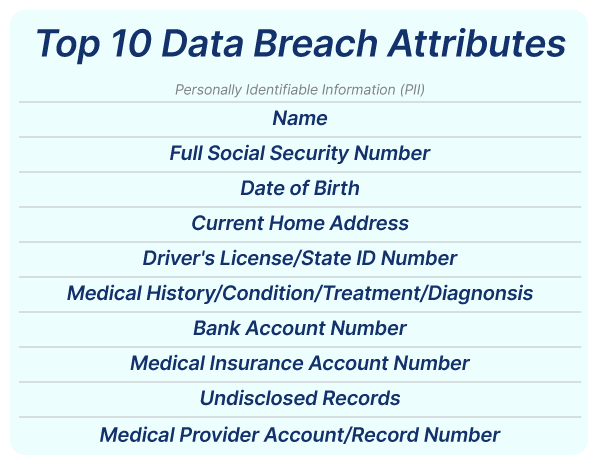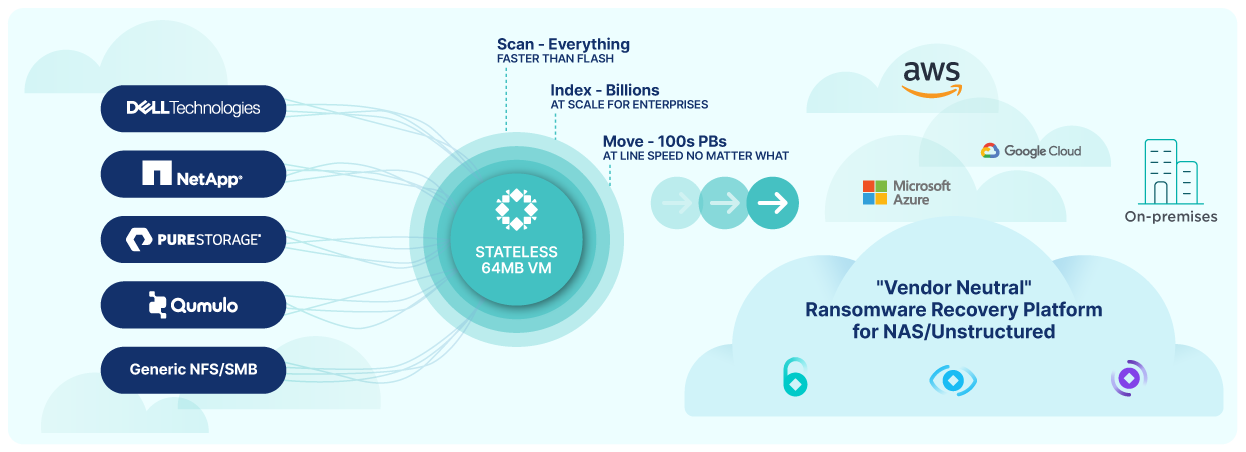With the digitalization of patient data, the healthcare industry has significantly improved and transformed healthcare processes. This shift to digital data has brought many benefits, like improved quality of care, reduction in errors, and improved communication.
However, the shift to digitalization has also led to the exponential collection of data, which is primarily unstructured. To put things in perspective, a typical healthcare and life sciences organization manages over 32.6 million sensitive files.
Vast amounts of unstructured datasets are sourced from diverse applications, such as:
- Patient data
- Picture archiving and communication systems (PACS), e.g., ultrasounds, X-rays, etc.
- Patient records
- Patient bedside telemetry
- Remote patient monitoring
- Research and genomic data
- Patient apps
- Electronic health records (EHR) applications like Epic
- Telehealth apps
- Clinical apps
These datasets are crucial for healthcare organizations to shape the next wave of patient care, operational advances, and differentiation. These datasets are sourced from multiple systems to analyze data and provide the necessary patient care.
However, managing, securing, and recovering this volume of data across on-prem, edge, and cloud from disruptions like natural disasters while maintaining privacy and compliance with legacy solutions has become extremely difficult.
When a healthcare organization can't secure its data, the repercussions can be dire, and cyber criminals are taking note of the security gaps. For instance, more than 540 organizations and 112 million individuals were implicated in healthcare data breaches. And the cost of a healthcare data breach was the highest among all industries at $10.93 million in 2022.
Disruptions from cyber threats or natural calamities jeopardize business operations and hinder patient care, leading to halted medical procedures and delayed treatments. While tackling this complex landscape, legacy data protection solutions encounter several pressing concerns:
1. Sensitive data protection
Healthcare organizations deal with extremely sensitive patient information, such as medical records, billing details, and personal data. Protecting this confidential information is crucial for complying with HIPAA and GDPR. The 2022 Data Breach Report by ITRC lists the top 10 Personally Identifiable Information (PII) attributes commonly stolen during cyber attacks.

Legacy solutions aren’t able to securely back up sensitive data and provide insights into potential exposures, risking patient privacy and compliance.
2. Complex data and application ecosystem
As outlined earlier, healthcare systems comprise diverse and complex unstructured data ecosystems across hybrid infrastructure. Let's take an example of an EHR application implementation like Epic. The Epic application uses the following main data sets from ancillary applications to provide parent care, audit, and financial information:
- The WebBLOB share, which contains the unstructured information of a patient’s record
- The Caboodle database
- The Cache/IRIS database
- The Clarity database
These applications are deployed across on-prem and cloud environments, increasing the cyberattack surface area. Legacy backups struggle to cover these varied applications and environments while ensuring data consistency and integrity.
3. Data volume and scalability
The volume of data generated in healthcare is enormous and continuously expanding. In the latest Rubrik Zero Labs report, Rubrik observed that a typical healthcare global organization has 278.4 terabytes of data, 80% of which is unstructured. Traditional solutions lack the scalability to manage this exponential growth effectively, compromising performance and accessibility as they are typically designed for smaller data volumes.
4. Recovery and business continuity
Healthcare operations, especially hospitals, can't afford extended downtime. Architectural patterns such as geo-disperse replication and infrastructure duplication are typically used to solve this problem but can quickly spiral out of control from a cost and complexity perspective and contribute to data sprawl, thereby increasing the attack surface area.
Having a reliable backup solution that can employ different protection methodologies depending on the criticality of the data will be key to controlling data sprawl, controlling cost, and protecting against downtime.
5. Security concerns
As the frequency of cyberattacks on healthcare organizations increases, getting insights into backed-up data is becoming increasingly important. Traditional backup solutions are insufficient as they lack sensitive data discovery and anomaly detection capabilities. This means that healthcare organizations are unaware of sensitive data exposure and have no visibility into any changes made to data over a period of time.
Tackling these challenges is paramount to ensuring healthcare data's resilience, security, and integrity, which is critical for patient care and meeting stringent regulatory requirements.
Rubrik NAS Cloud Direct (NAS CD) helps healthcare organizations by employing a comprehensive approach to backing up and fortifying data security posture, ensuring the confidentiality, integrity, and availability of critical healthcare data in the face of natural disasters, evolving cyber threats, and compliance requirements.

This SaaS solution has a simple VM-based architecture that can be deployed quickly within minutes. It can securely protect different datasets, including PACS imaging, patient records, research data, and EHR applications like Epic. This solution can safeguard them effectively, whether on-premises or in the cloud.
To consolidate data protection, NAS CD operates on a simplified policy-based model, determining backup frequency, data retention, and optional replication targets (either local or cloud-based). It establishes immutable backups, credential isolation, and data-at-rest encryption, bolstering cyber resilience.
The underlying technology comprises specific engines designed to overcome traditional backup tool limitations:
1. Vendor agnostic platform
NAS CD seamlessly integrates with diverse NAS platforms and public cloud providers. It eliminates the need for vendor-specific solutions, reduces capacity and licensing costs, and prevents vendor lock-in. It enables direct archiving to preferred cloud platforms like AWS, Azure, and GCP.
2. High performance at scale
Engineered for exabyte-scale environments, NAS CD efficiently protects billions of files across various NAS technologies. It ensures high performance by optimizing network throughput with parallel data streams while minimizing user disruption through dynamic throttling.
3. Flexible recovery options
NAS CD facilitates instant data location through global search and allows record-level recovery with near-zero recovery time objectives (RTO).
4. Facilitating compliance
Integrated with Rubrik Sensitive Data Monitoring, NAS CD discovers and classifies sensitive data like PII, PHI, and PCI. It assists in managing compliance requirements for regulations like HIPPA and GDPR by scanning existing backups and locating where sensitive data lives and who has access to it.
5. Integrated security tools
Leveraging Rubrik's security tools like Anomaly Detection and Cyber Recovery, NAS CD utilizes machine learning to detect cyber threats and facilitates rapid recovery after an attack. Anomaly Detection identifies potential attacks, while Cyber Recovery swiftly restores clean versions of impacted applications and files.
Rubrik NAS Cloud Direct provides a comprehensive and adaptable solution tailored to the intricate needs of healthcare data security. It ensures resilience, compliance, and swift recovery in the face of evolving threats and regulatory demands.
To learn more, visit Rubrik for healthcare or contact sales.
